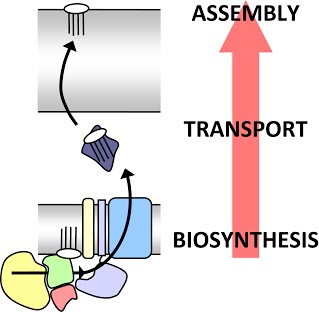 Lipid membranes define the boundaries of life. Membranes thus determine how a cell communicates with its environment. The integrity and surface properties of membranes are particularly important in hostile environments such as those experienced by bacterial pathogens inside their hosts.
Lipid membranes define the boundaries of life. Membranes thus determine how a cell communicates with its environment. The integrity and surface properties of membranes are particularly important in hostile environments such as those experienced by bacterial pathogens inside their hosts.
While eukaryotic membranes have been extensively studied and modeled, comparatively little is understood about the lipid membranes of pathogens such as Mycobacterium tuberculosis (Mtb), the causative agent of tuberculosis.
We are applying biochemical, microbiological and biophysical methods to fundamental questions in bacterial membrane biogenesis as they relate to mycobacteria in general and Mtb in particular.
We are also developing and applying chemical tools that enable us to study processes in the bacterial cell envelope specifically and accurately.
Mycobacteria generate many structurally complex and unusual lipids. Many are associated with virulence, but few have received molecular-level scrutiny in the membrane context. In particular the mechanisms by which lipids are transported to the specialized outer layer, or mycomembrane, are not well understood. The JSeeliger group is pursuing several questions that address these issues:
- What are the molecular mechanisms underlying mycomembrane assembly?
- How do these pathways contribute to cell growth, division and size determination?
- How can we subvert lipid biosynthesis and membrane assembly pathways for antimicrobial therapy?
Our team comprises scientists with a broad range of expertise and we also engage in diverse collaborations within and outside SBU. We welcome new members who have interests and experience ranging from synthetic chemistry to biophysics to microbiology.
Go to Contact for more information about joining the JSeeliger Lab. See Publications for our latest scientific releases.

